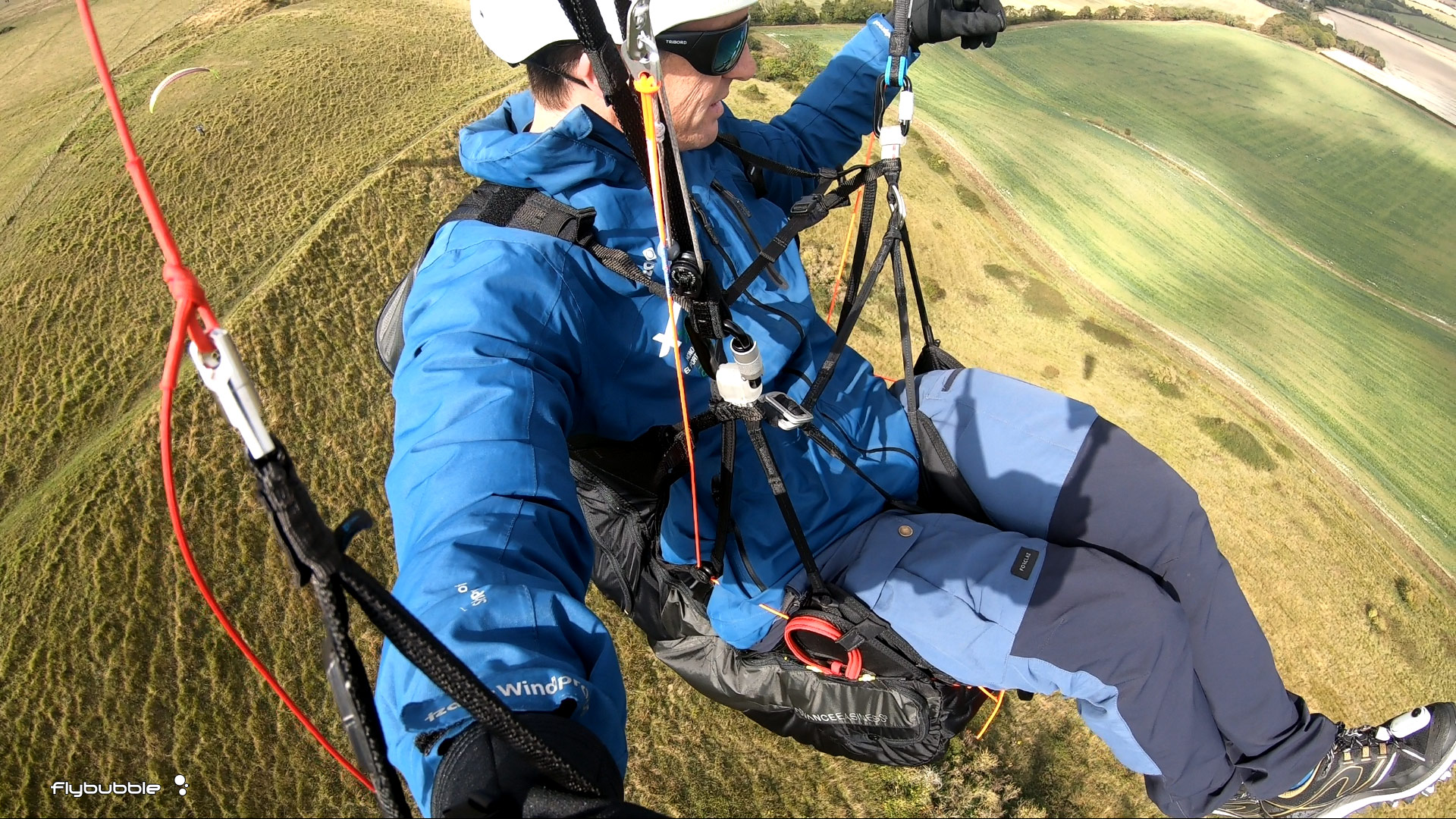
The Advance EASINESS 3 is a lightweight reversible mountain paragliding harness/rucksack with split-legs design, and a removable EN/LTF-certified airbag with integrated reserve container under the seat. It competes with the Gin Yeti Convertible 2, Niviuk Roamer 2, Supair RADICAL 3, Supair ALTIRANDO LITE (seatboard), and Woody Valley WANI Light 2 (seatboard), amongst others.
In its class, the EASINESS 3 is surprisingly not the most expensive and one of the lightest, which is remarkable given the robust construction and refined appearance. It's only 2.3 kg in the M size: rucksack and harness. On your back it will make your paragliding kit appear to be as compact as a hiker's bag. But what's it like to use, down on the ground and up in the air? We put it to the test to find out...
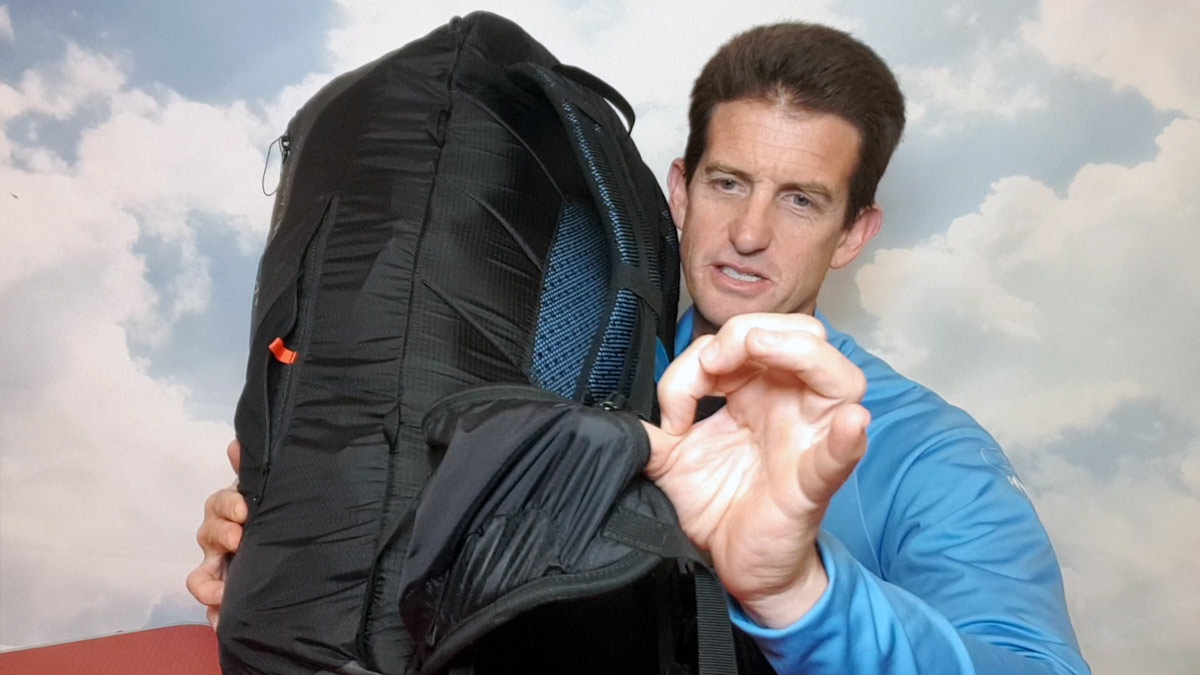
Advance EASINESS 3: Key features
- Split leg design (no seatplate)
- Pass-through buckles used to secure the get-up legstrap system
- Harness reverses to form a backpack
- Integrated reserve container (at the bottom) with shoulder attachment points
- Large volume rear pocket
- Modular design (airbag and reserve can be removed)
- Padded backpack with removable waist strap
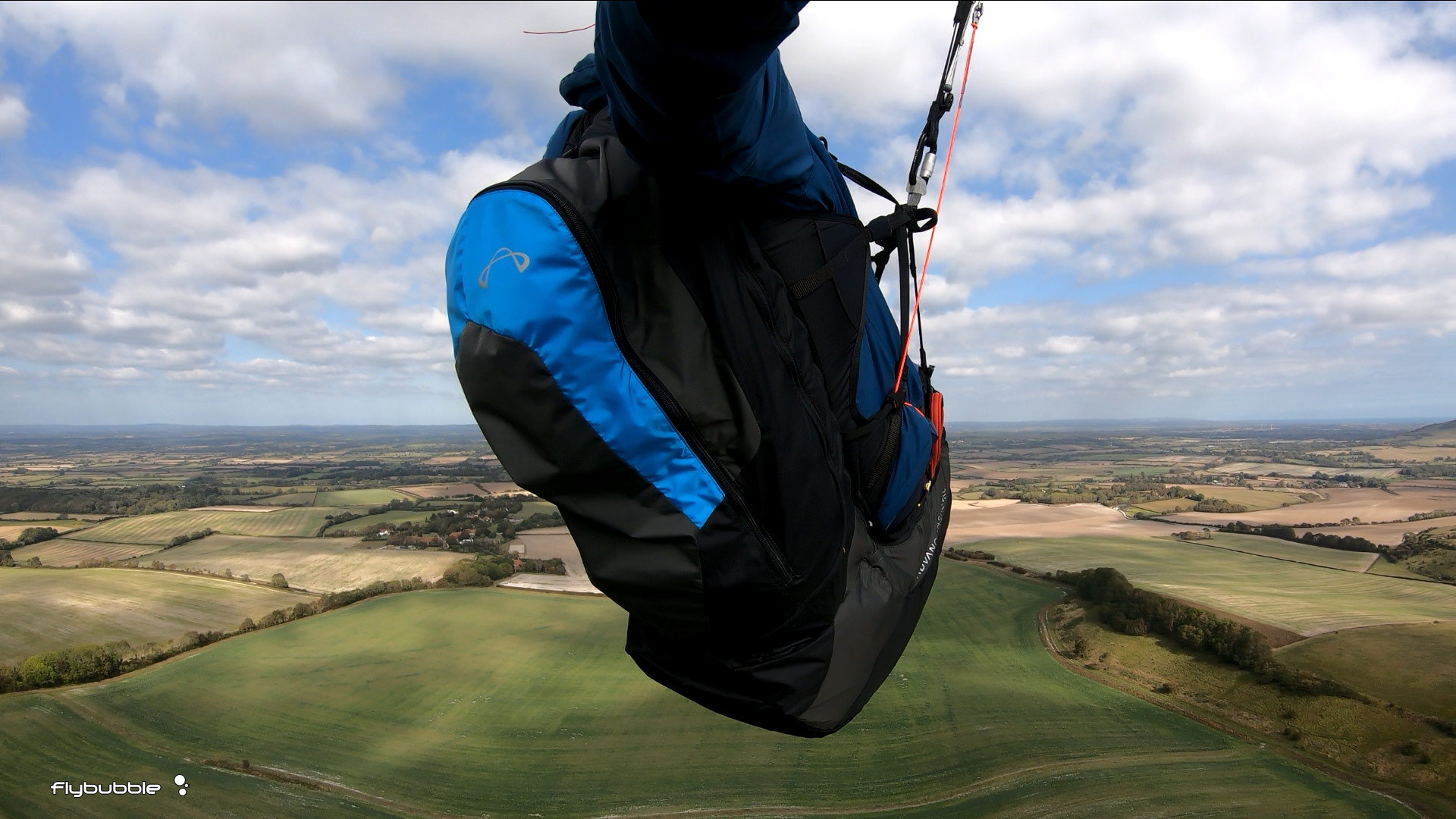
Protection
The airflow-inflated Airbag Protector fills partially just due to the shaping wire, and in the air the dual scoops (one behind the legs, one on the left side) ensures a well pressured system but don't expect the kind of protection you'd get from solid foam coverage like the Advance SUCCESS 4. This is a minimalistic solution that is certified from one impact angle only. As an airbag system, it is well formed, thoroughly tested and it looks effective.
The air does not feed into the rear pocket, to avoid a loss of pressure (the rear pocket is not sealed).
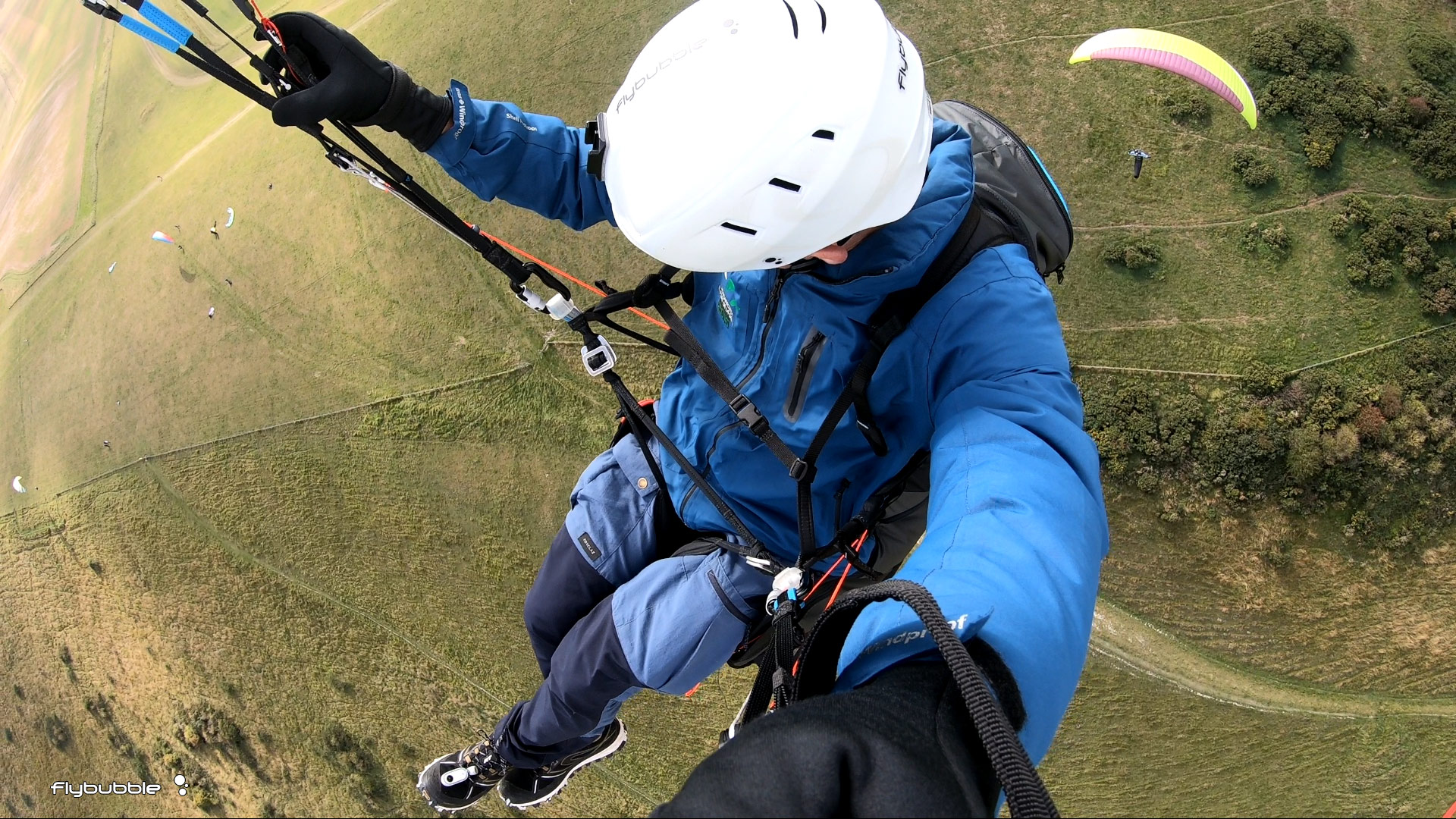
Comfort
Longer softer leg loops provide more comfort than the EASINESS 2, however the slightly rigid ‘crotch catcher' can be a bit uncomfortable to dangle from near the ground. Getting in is easy and only needs a small wriggle. It has only two adjustments: shoulder strap length, and recline angle. I could achieve a nice ‘laid back chilled out angle of dangle', which retained good weightshift authority by extending my leg on one side or the other.
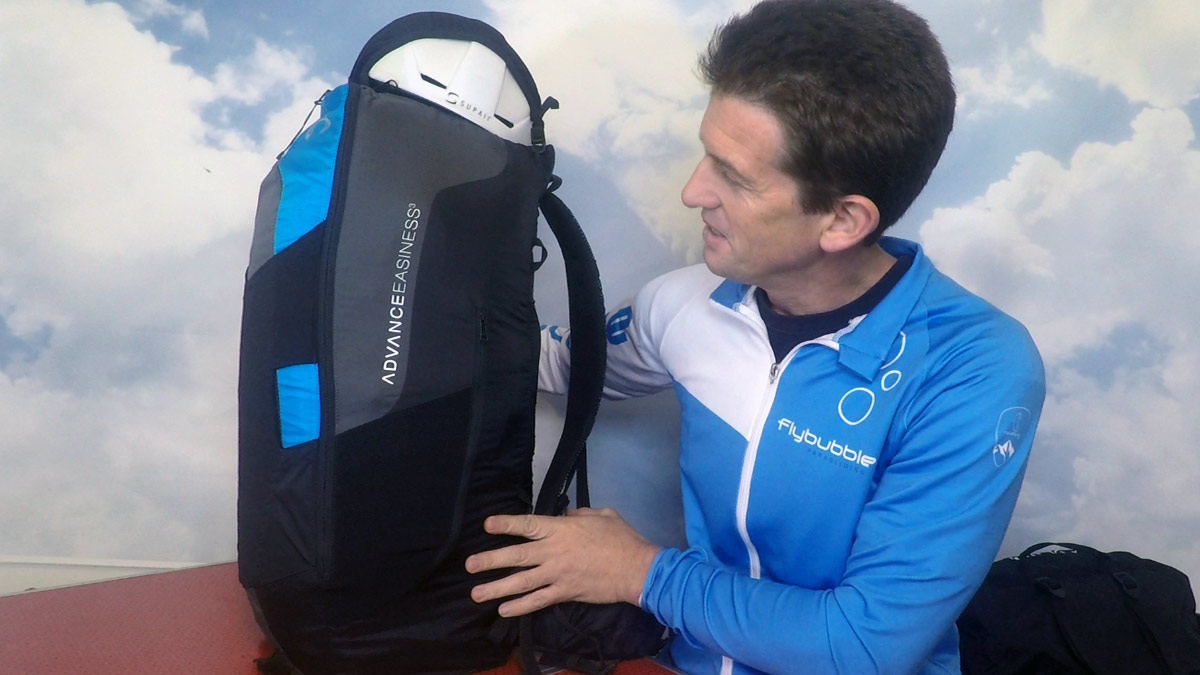
Storage space
The rear pocket has lots of space available due to the absence of a rolled up backpack which you'd normally have to stow somewhere. The EASINESS 3 has a side pocket that is large enough for snacks: accessible in flight but it is in an awkward rearward position. There is nowhere to place instruments apart from the hook-and-loop patch on your shoulder strap to attach an audio-only vario. For larger instruments you'll need a riser mounted solution like the Syride SYS'Nav, a legmount or a chest-strap holder like the Flytec Cricket.
A net cover secures your helmet on the top of the bag. I'd recommend also using a light helmet bag so you can stow your instruments, gloves and valuables inside the void space of your helmet without worrying about them escaping from the sides of the netting. There are two base loops and an elasticated loop for ice axe and trekking pole stowage, as well as various securing loops and pockets. A deep zipped pocket on your waist strap and an elasticated snack pouch. It's a great backpack that is very well designed.
Due to the shape that the inverted airbag makes, there is not much space in the base of the backpack, which is a common issue with reversible bags. It is designed with the Advance PI 2 or other light wings in mind. Unless you have a lightweight or semi-light wing, you will need to pack your wing very neatly, compactly, and use some force to compress it into the EASINESS 3 '50 L' packing space. A zipped expanding gusset would have made it a more broadly accessible travel harness.
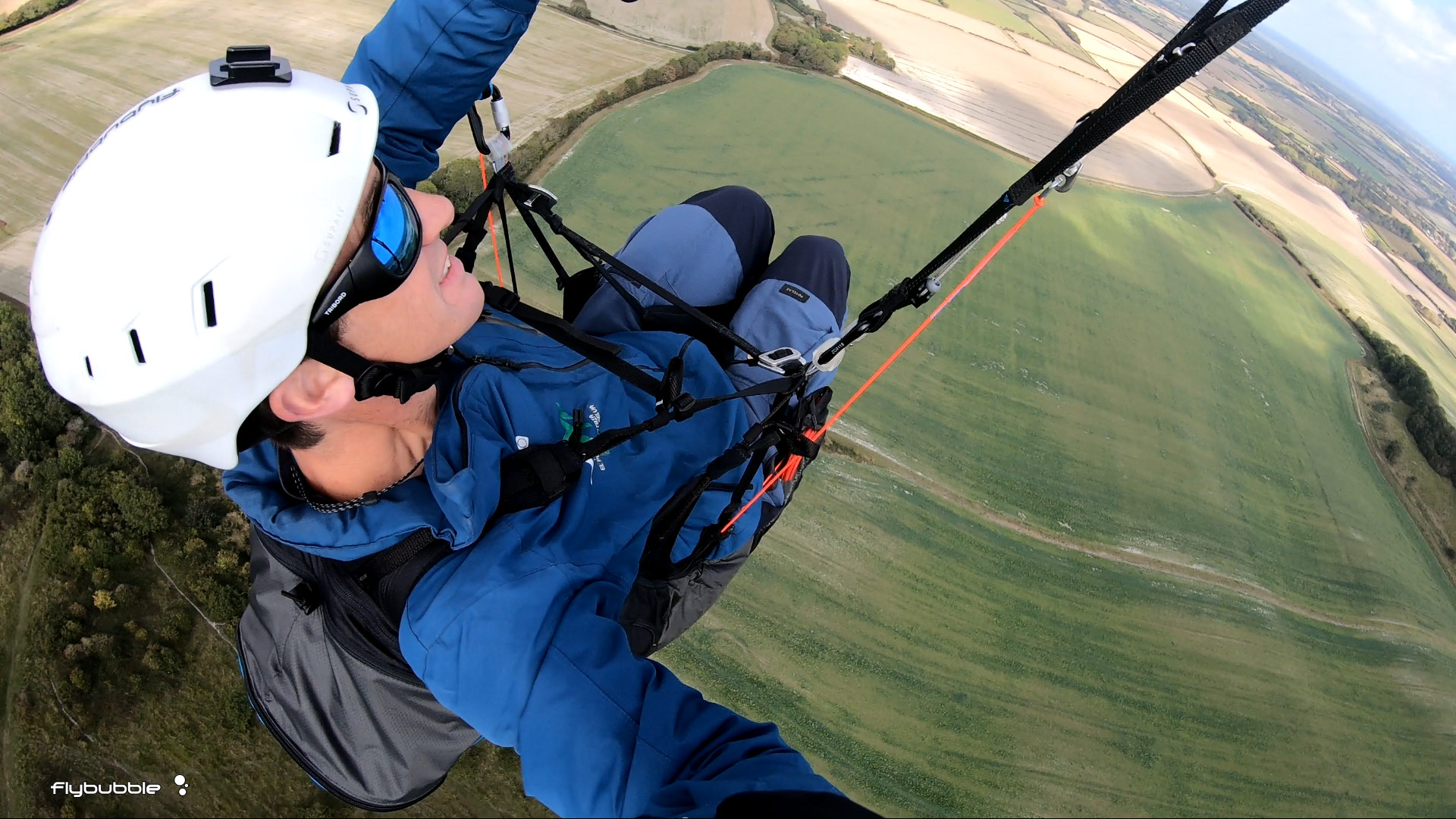
Advance EASINESS 3: Evaluations
What it does really well is the light weight; compactness; carrying comfort and durable construction. It offers a nice feeling of connection with the wing, with easy turn authority and comfortable softening of feedback. The leg loops are comfortable. It has a great backpack with comfortable wide straps and pockets in all the right places. All that is missing is a light cockpit solution for larger instruments or phones. The Advance Cockpit Carry is excellent but at 440 grams might be a bit more than you want with this lightweight harness. There are other cockpits available, including lighter ones.
The removable airbag system is well-secured with toggles and zips. If this is removed then the reserve parachute will of course need to be either re-positioned or removed also. The optional 'Backside Cover' (ordered separately) should be fitted instead. Although relatively straightforward (following the instructions), this is not very quick to do. Valery Chapuis from Advance explained, "We have two systems, Airbag Protector or Backside Cover. It's not our primary aim to make these quick to remove, but firstly to make them correctly integrated and stable (well secured). The pilots will choose one or the other, and will very seldom (or never) change. 95% of the EASINESS 3 harnesses are sold with the Airbag Protector." If you remove the airbag but want to retain a reserve (for an ultralight mountain ascent perhaps) you'll need a front container and bridles, and you'll need to connect directly to the carabiners, which offers a fast and simple removable solution. If you want to use the shoulder points you'll need to devise your own way to tidy away the bridles en-route.
In the air I felt confident and comfortable on glides, but when using speedbar the harness pulls on the lower back (though less than the EASINESS 2). Valery from Advance commented: "the angle between the back and the thighs, and the angle between the thighs and lower legs are changing, so the pressure also changes. We tried to find the best way for the line coming from the risers and going to the speedbar, with an angle as open as possible. Another pulley position will not change a lot but will require new straps, more materials and weight. Most of the pilots flying the EASINESS use the speedbar very seldom, much less than an XC pilot". I found the speedbar webbing loop not entirely easy to find with my foot, but it was comfortable enough for occasional use.
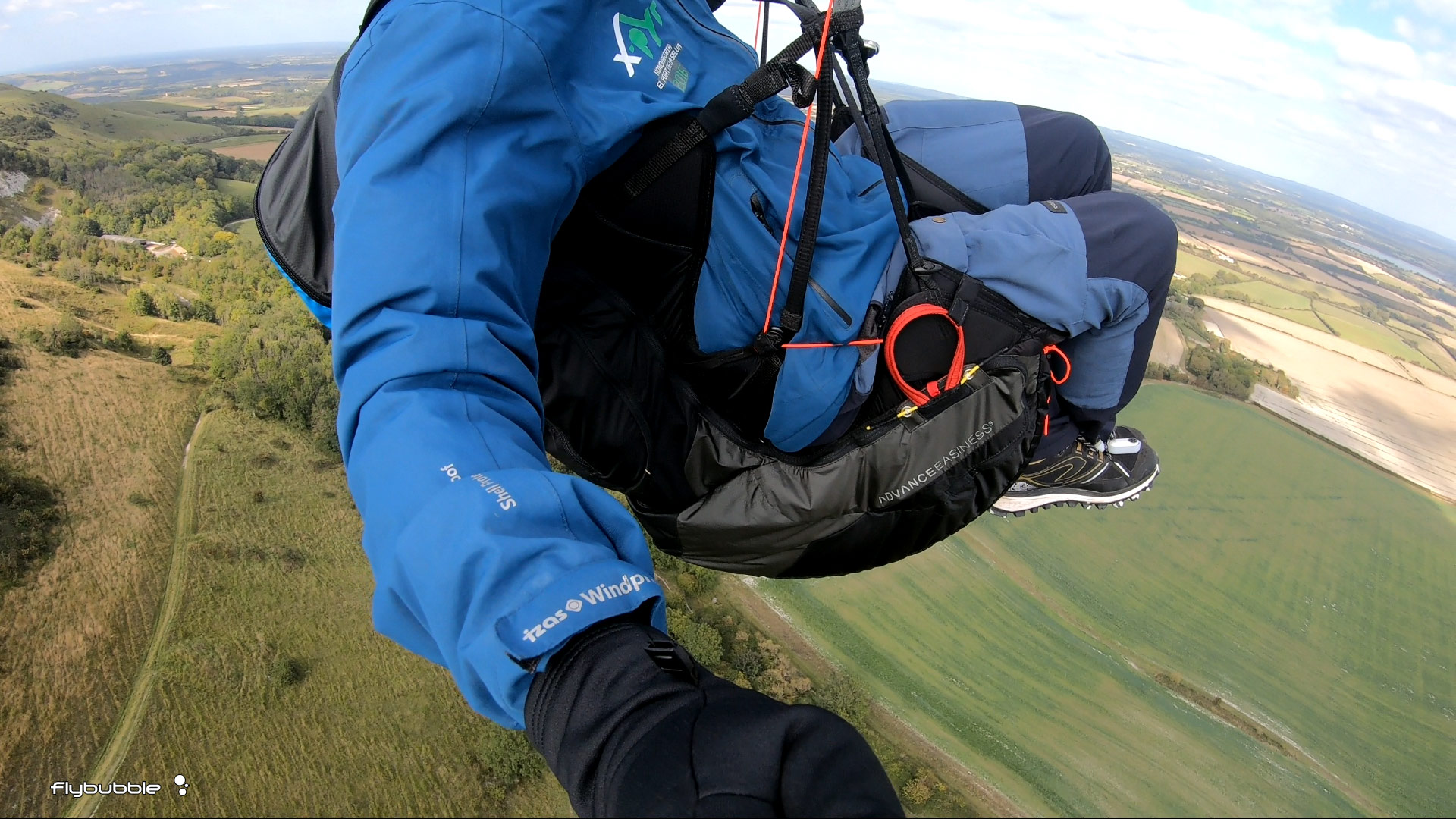
Who is it for?
Recreational pilots who like an upright harness position with ‘legs free' freedom. Pilots who hike up to launch and want to dramatically reduce their kit weight. Travellers who are tired of lugging huge bags through transit. Pilots who have light or at least semi-light wings.
Ideally, you'll be an adventurous kind of pilot who likes to explore. You'll be happy with flying in some scenic places and you might want to go XC. You might have about 50 hours flying experience and you're going on a week trip to somewhere exotic. You'll love the way the EASINESS 3 simplifies your kit. Stick on your audio vario, launch, go explore!
With a semi-light wing, the bag is a bit small for a serious volbiv adventure, as you only have capacity for your wing, clothes and snacks. With an ultralight wing like the Advance XI there is more than enough volume for a multi-day epic, as I can fit in my tent, food, stove, raingear and electronics.
"The EASINESS 3 is another impressive product from Advance that feels well balanced and trustworthy in the air and offers a premium yet lightweight backpack on the ground. For hike and fly trips, when combined with a small wing, it's ideal."
- Greg Hamerton, Flybubble
Find out more about the EASINESS 3
Advance EASINESS 3 harness review video
Join us as we turn the Advance EASINESS 3 inside out...
Brought to you by Flybubble
Like what we do? The best way to thank and support us is to buy gear from us and recommend us to others. Review our service on Trustpilot and our products on Flybubble Shop. You can also subscribe to Flybubble Patreon. Thank you!

